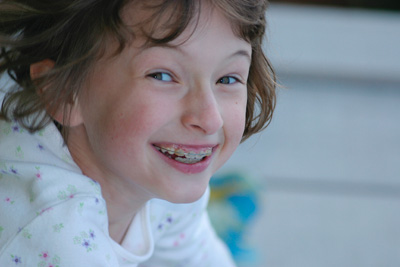Canon D60 Hands-on Review
by David Cardinal, April 2002
As the first of the new generation of prosumer digital SLRs I was very excited when my review D60 showed up. Thousands of shooters have been stuck in an awful limbo between the not quite satisfying point and shoot digitals, the D30 and the weigh a ton cost a fortune pro digital SLRs that many of us rely on.
The Canon EOS D60 and the Nikon D100 are designed to change all that. They have the chance to break the logjam and start the widespread conversion of film SLR shooters to digital. As the first out of the gate, the D60 is of course the current focus of attention. So, is it going to be the camera that starts the stampede?
First Impressions
As always, Canon did a professional and excellent job of packaging the unit. It arrived with a full kit including the body, a nifty 16-35 f/2.8 EF lens, 380EX Speedlite, 2 batteries, cables, strap, manuals, software and the 300 f/4 I'd specially requested to use for photographing the endangered Giant Kangaroo Rat (a small and somewhat secretive nocturnal mammal) while I had the camera.
The first thing every digicam owner or reviewer knows to do is plow through the kit to find the batteries. After all, they have to be charged over and over to relieve that dreaded memory effect. But wait! These are Lithium Ion batteries, and small besides. What a joy to just throw them on the dual-battery charger, wait a couple hours and be ready to roll. They fit nicely in your pocket also.
Cute, Quick and on the Money
The D60 is a compact package for a high performance SLR. Relatively small and light, and fits well in my hands. The controls were relatively straightforward. I was able to turn the camera on, set everything, and take photographs long before I opened the manual--although if you're not familiar with other Canon SLRs you'll probably want to do some reading first!
What about the images? Ambient light exposures were right on. When the white balance was set correctly colors were awesome as well. Like most digital cameras the images right out of the camera can use a little babying as far as final color. Either a custom profile or experimentation with other standard profiles that could be assigned to images is well worth some time and effort. That will help your colors 'pop'. Pleasantly enough the camera seems close enough to Adobe RGB (my working space) that just opening the images worked quite well. Fortunately for those who want the best in quality it is definitely NOT an sRGB camera.
What about Flash photos?
| The flash was usually as accurate as any I've used with a digital camera. The only thing I found to be careful of with the flash exposure is that the camera works so hard not to over-expose the highlights that some scenes came out fairly dark and required an adjustment in software to correct the overall exposure. I did find it a little tricky deciding where to set the White Balance for indoor flash. If the flash was only part of the light I kept wanting to dial in an adjustment to the flash WB setting but that wasn't possible. So you'll need to experiment on your own to decide if you prefer the flash setting or warming your flash with a Stofen Omni-Bounce Gold and then using the Incandescent setting, or something else altogether. |
|
Fast Flash for Real?
Unlike various other solutions to high-speed flash sync through Focal Plane flash, the D60 has one that is documented as easy to use and working without caveats. I haven't had a chance to really test this feature, so stay tuned for an update in the next few weeks.
Speed Daemon?
When capturing images of well lit scenes the D60 is a speed daemon, rattling off several frames per second. However, with slow shutter speeds the camera slows down dramatically. It's still quick compared to its predecessor or consumer digicams, but at lower exposures won't hold up to its big brother.
Design Issue: White Balance Settings
| There is one design issue in the D60 that I found very
puzzling and more than a little annoying. There is no preset White Balance
over 6000K. Since the practical color temperature of daylight is often over
6000K--in clouds, in the shade, and at high altitude for example, and
because we often want to warm up our images, WB settings of 6000K-8000K are
very useful. The accompanying photo was taken outdoors on a heavily overcast day with the 6000K setting. As you can see it needed warming up from a custom white balance. |
 |
 |
It is also a fairly straightforward process to fix the WB in Photoshop after the fact, but that is clearly not the way most of us want to spend our time. The image to the left is the same image with a quick curves adjustment to warm it up. As Chuck at Canon was quick to point out, this issue can be worked around by setting your Custom White Balance to a higher temperature and using that. Clearly this is what I think many D60 owners will or should do. |
The D60 has an ingenious system for setting the Custom White Balance. Rather than shooting an image specifically for WB, you select one of the images on your card as the WB target and the camera sets your custom WB to make the middle of that image appear neutral. This is a bit odd at first, but it does make possible the notion of having a library of stored WB frames. I can easily see sport shooters, for example, having a small library of WB frames for various venues--perhaps all posted on a website to share! But personally I'd still miss not having a warmer setting. And of course the ability of the 1D to dial-in a specific color temperature, but that's much less important.
Other Features
The D60 offers a variety of image parameters that can be set in the camera, including Saturation, Contrast, Sharpness, and Color Tone. I didn't really experiment too much with these, although I'm sure I would develop a favorite set or two if I had the camera permanently.
Summary: Is it right for me?, or "Why buy a 1D?"
If you're looking to replace your film SLR and have been waiting for a no compromise performer at a reasonable price, this is it. A great all-around camera.
If you're hoping to get a cheap substitute for a 1D to use in your work, you'll need to carefully evaluate the tradeoffs. The 1D is even faster, offers a sophisticated array of White Balance & Color options, more flash settings, and a broader array of accessories. But if your need is primarily for excellent images and you can live without all the bells and whistles of the 1D then the D60 will deliver the goods. You might want to look through our section on Little Things as well to make sure you can live with them. Here are what I found were some of the trade-offs compared to a full-out "pro" D-SLR:
- Limited white balance settings & flexibility
- No calibrated color space for output
- Only 3 AF sensors; I particularly miss having upper & lower sensors
- No Vertical shutter release--fixable through the optional Battery Grip BG-ED3 (which also gives you lots more battery power an auxiliary main dial, AE/FE lock button, and a focus point selector for about $200 street)
- Not quite the same "pro-quality" rugged construction as the 1D
- Limited combinations of shooting & flash modes
Little Things
As always, there are a few little things that are worth mentioning. First, the strap mount points on the camera are low enough that when it is used with a flash the camera hangs with the lens directly down. This points the glass at the floor if you start to set it down by lowering the strap--and also makes it hang a little awkwardly from your shoulder. Without a flash, though, it works just fine.
Second, the LCD in the back of the camera has the slows like the original D1 LCD. First you see a Busy cursor, then a blurry image then the sharp image. We all survived with that shortcoming just fine on the D1, but the D1X and D1H have gotten some of us a little spoiled with instant thumbnails. Careful not to rush to delete your images before they sharpen up!
Third, the Canon LCD, like the one on the 1D, doesn't seem to allow for a third party cover like the Hoodman. I worry about the potential for scratching or injuring the LCD, although I'm sure Canon has taken pains to make the built-in cover as robust as possible.
It also took me a little time to get used to the fact that flash was always in low-speed sync when you're shooting in Aperture priority. So if the ambient light exposure duration is (say) 1/10, then the shot will be taken at 1/10, not forced to 1/60 the way it is on many Nikon bodies. This is how I normally leave my cameras set, but I'm used to having the option of turning it off. To get that effect with the D60, there are two things you can do: 1) Set the camera to Tv (Time-priority) and set the shutter speed (or manual mode), or 2) Use Custom Function 6 to lock the shutter speed at 1/200th when the ready light is on with a dedicated flash. This is probably the one I'd use longer term!
I didn't find the placement of the WB button optimal, either, particularly when I had a flash on the camera. In order to place a finger from my left hand on it (which I rotated the back wheel with my right) I needed to reach around the flash. Probably not a problem for most usage, but if you're in a hurry and swapping WB back and forth it's a little awkward.
Finally, too many of the actions on the back required an extra confirmation step for my taste. This probably makes sense overall, but for example, to delete an image you need to press the Erase button, then move the whell to Okay, then press Set to actually erase the image. A nice safety feature, but slows you down if you edit in camera a lot.
On the positive side, I was happily surprised to see my D1H images pop right up on the D60 LCD. Nice that a camera manufacturer has finally just let their camera show what images are there instead of being picky and only showing precisely pristine images from their own cameras. In the event that you had two cameras and needed to swap cards this would be a nice plus.
 Endangered Giant Kangaroo Rat
Photo copyright David J. Cardinal
Canon D60, 30mmf/4, 380EX Speedlite
Tv 1/250, Evaluative, WB Flash, ISO 400
(GKRs are nocturnal, so all light
was provided by the Speelite!)
Endangered Giant Kangaroo Rat
Photo copyright David J. Cardinal
Canon D60, 30mmf/4, 380EX Speedlite
Tv 1/250, Evaluative, WB Flash, ISO 400
(GKRs are nocturnal, so all light
was provided by the Speelite!)
